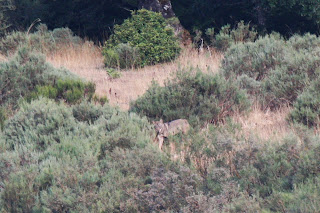A must do activity whilst staying in the area is to take a wildlife boat trip out of Portree. The main target on these trips is the white-tailed eagle, which I have seen many times on Mull and around Gruinard Bay, but the resident pair that nest on the cliffs not far from Portree provide the best sighting of this magnificent eagle you could ever hope for. Over time the local boat operators have built up a relationship with these birds by offering them a mackerel. The result being, (if you are lucky) one of the birds will swoop down from the cliff above and pluck the fish from the water at close range leaving the crowd of onlookers gasping and the skipper desperately trying to balance the boat as everyone rushes to one side.
White-tailed eagle
Great skua
Gannet
Common seal
Common seals
On the way back into Potree harbour I spotted a superb great northern diver, sporting its full summer plumage which was a treat as I never seen them in this plumage before.
Great northern diver
We then moved to Plockton for a few nights and explored the Applecross Peninsula. The drive across this remote area is not for the inexperienced driver and there are signs warning you not to attempt it at all in the bad weather. The highest point is the Bealach na Ba pass which takes you towards the village of Applecross is the highest navigable road in Britain and one of the most beautiful too.
Applecross Pass
There are plenty of red deer on the higher moor here and on arrival in the village of Applecross we actually found some in cultivated fields close to the road.
Red deer
Red deer
Iceland gull
Iceland gull
Iceland gull
Hooded crow
Wild Rock Dove
Rock pipit
Pine marten
Buachaille Etive Mor
We were staying Glenloy at the start of the flight season of the chequered skipper, which is now restricted to just a handful sites in the Fort William area, but despite some favourable weather conditions at the time of our visit we still failed to find any, but we may have been just a little too early for them to be on the wing.
Siskin
Orange tip
Oak fern
One of the last points of call was Loch Garry en route back to Inverness, for some exquisitely marked summer plumaged black-throated divers and we were even lucky enough to see common scoter on their breeding grounds here too.
Black-throated diver
Loch Garry
























































